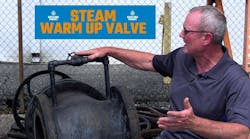There is a worldwide movement to reduce carbon-dioxide (CO2) and other greenhouse-gas emissions. While the United States has focused mostly on nitrogen oxide (NOx), European and other countries have enacted tough environmental policies to drastically cut CO2 emissions to levels not seen in more than 20 years. Most of these countries have enacted some form of a cap-and-trade program to facilitate CO2-emission reductions.
Cap and trade is an economically driven way to reduce CO2 emissions. A cap is a limit on the amount of pollutants a business can emit. Businesses are given emission permits and required to stay within certain emission limits. Larger polluters that need to increase their emission allowances must acquire — by purchase or trade — credits from those who pollute less. Credits are traded like commodities through national and international markets. Emissions levels are reduced systematically until a countrywide emissions goal is met.
If a large polluter does not buy emissions credits from a smaller polluter, it will be fined by its government for exceeding its cap. Fines usually are more expensive than the cost of purchasing a credit, so it most often is to a company's benefit to buy a credit rather than risk a fine. Thus, businesses have an economic incentive to reduce their emissions levels and sell their excess credits.
When businesses are evaluating their capital expenditures and making long-term strategic energy plans, cap and trade should be considered as a relatively near-term policy that can affect energy use greatly. Because boilers are responsible for a significant portion of a company's CO2 emissions, and most boilers are more than 20 years old, with efficiencies of less than 75 percent, retrofitting or replacing a boiler system is an excellent opportunity to substantially reduce CO2 emissions.
Although the United States does not have a cap-and-trade program, forward-thinking businesses will reduce emissions on their own and should look to their boiler rooms as one of the first places to economically reduce CO2 emissions.
As head of the marketing-development program for Cleaver-Brooks Inc., Paul Welch Goggins III is focused on developing the Cleaver-Brooks Energy Solutions Initiative.








